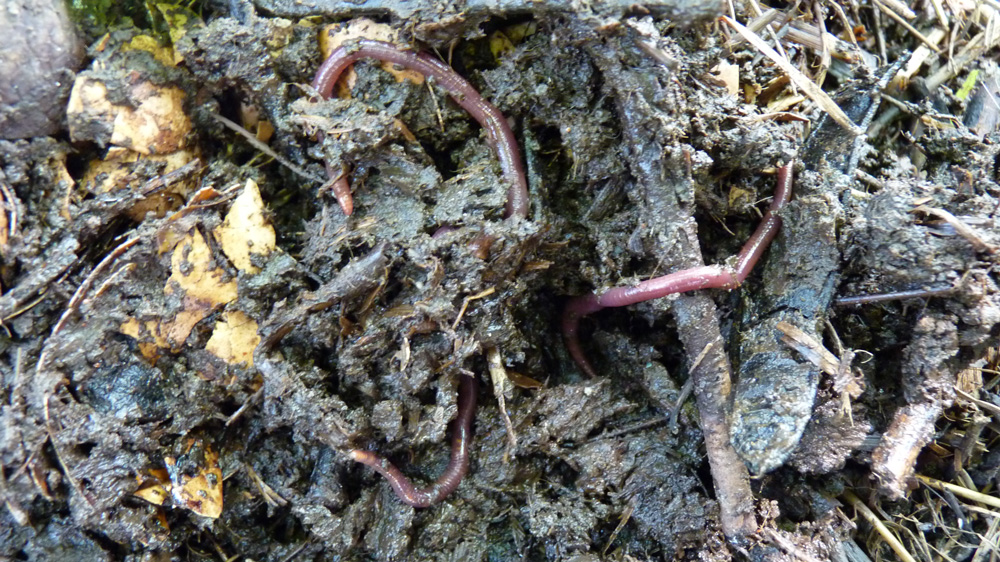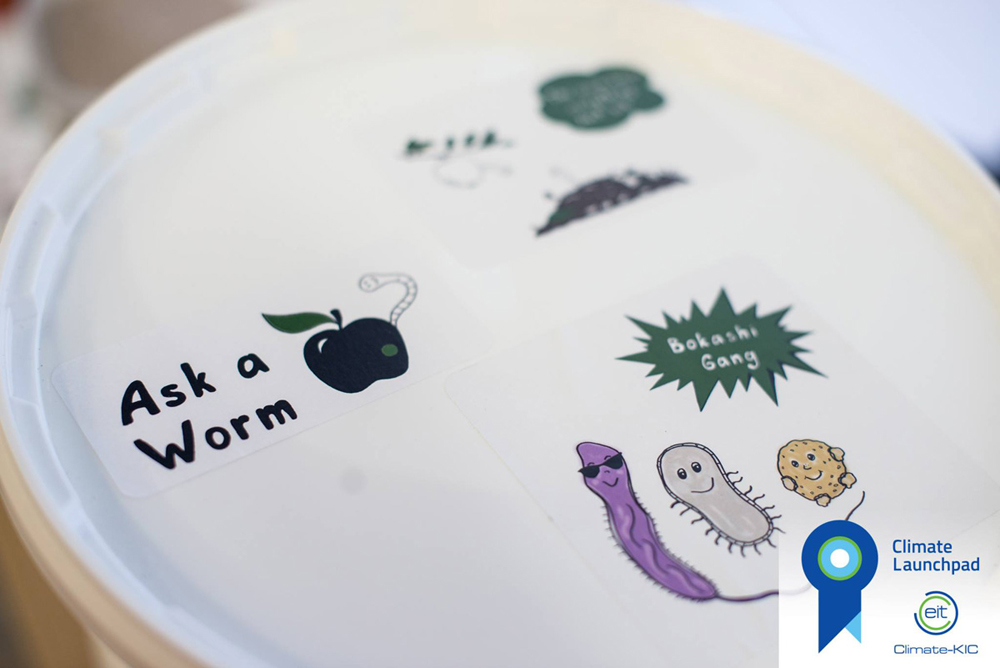
So, how does the AskaWorm process take place?
First, you need to ask yourself if that’s what you really want. You need to be aware that there might be some difficulties at the beginning, and especially of the fact that composting means “communicating” with your very own food waste.
If the answer is still a “yes”, then you need the buckets and bokashi bran. You can ask the AskaWorm team to get them, or find them yourself.
The AskaWorm team usually uses well-closing buckets of 5 to 10 liters (you may notice they are not the official bokashi ones, but are cheaper, more available, more convenient and also seem to not affect the process too much). The bokashi bran we make ourselves.
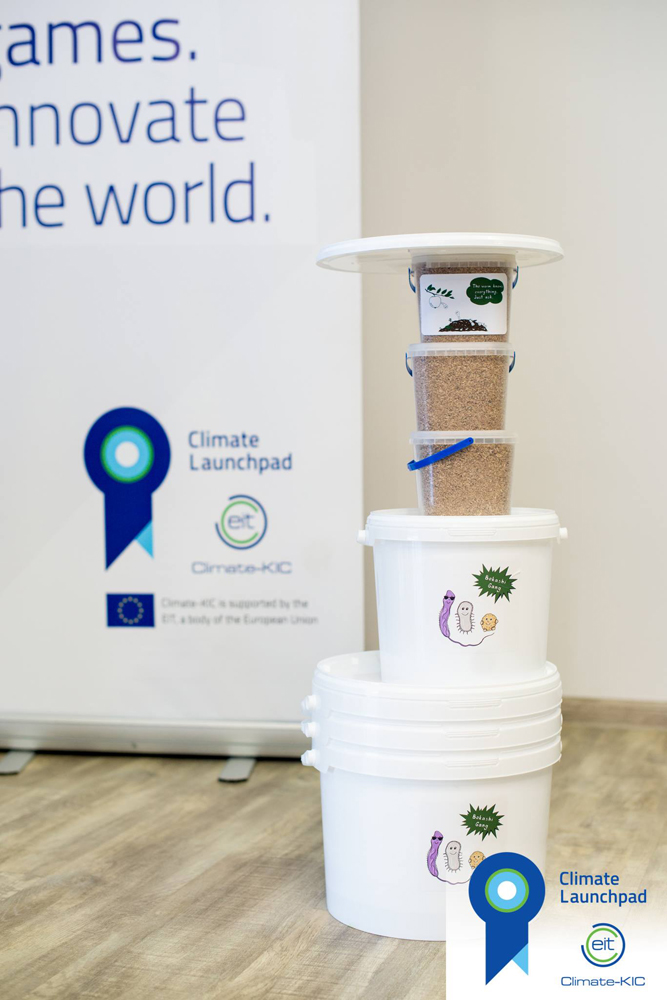
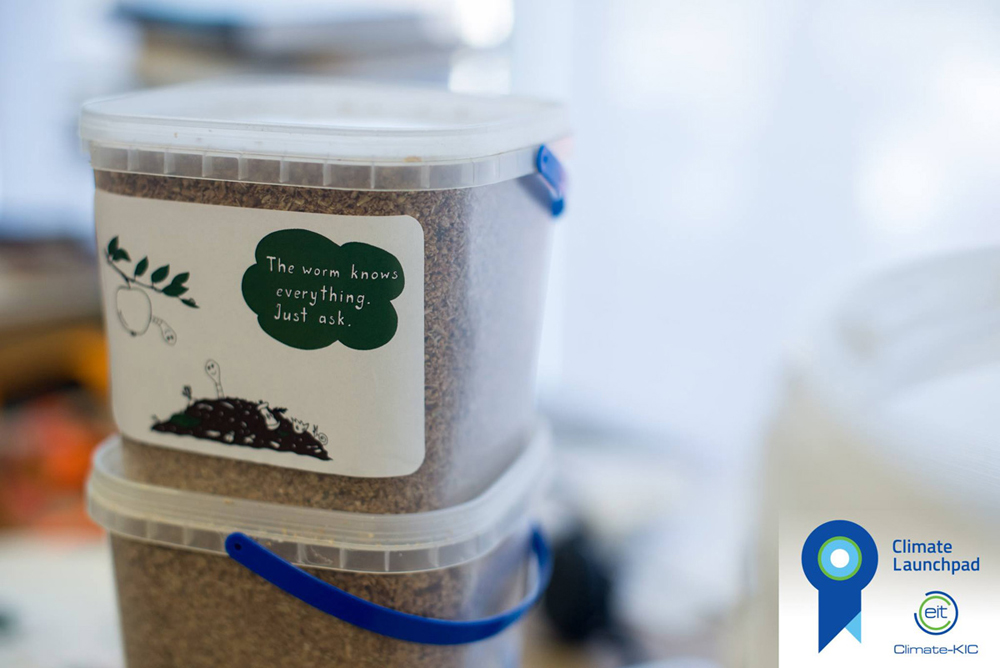
If it is needed, an information session is organized.
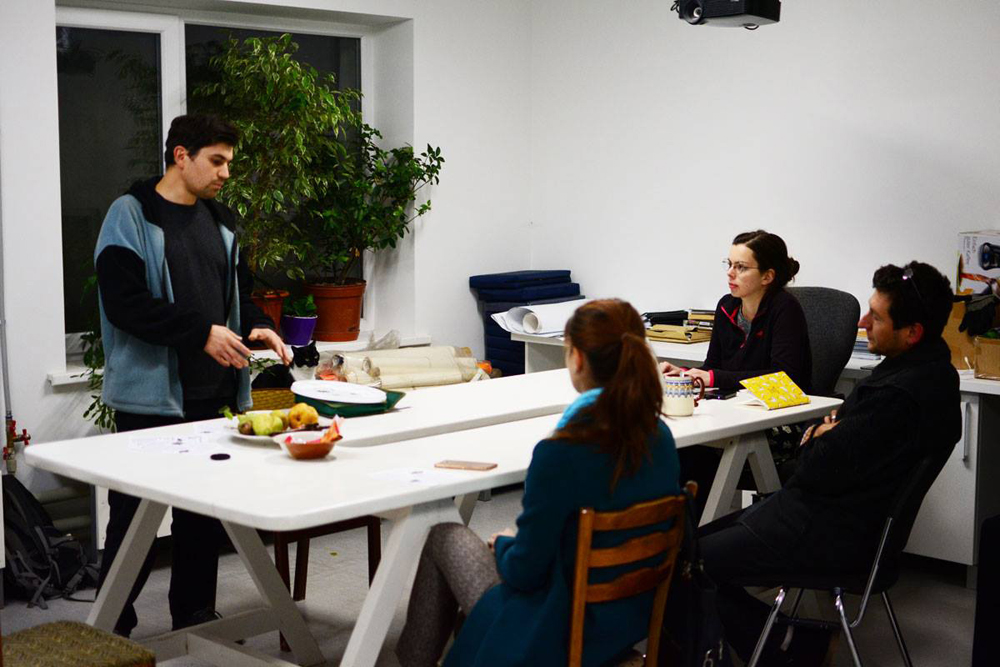
Then, you are left with all you need to make bokashi composting.
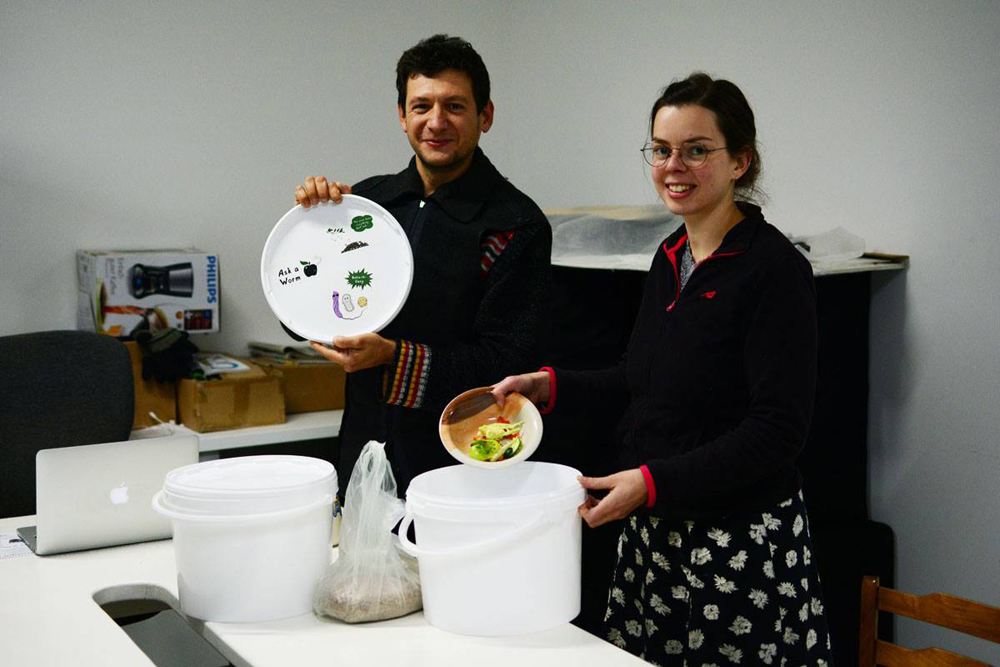
And then you do it – throw all your food waste into the bucket, cover each layer with some bokashi (about 5 gr), and close it again until the next time. It is recommended to throw smaller pieces and also to press the waste, so that as little air as possible is within it. More detailed instructions will appear here: http://askaworm.org/bokashi-composting/
Anyway, that’s the precomposting – “pickling” the waste so that it doesn’t rot and keeps all what is good in it for the next stage.
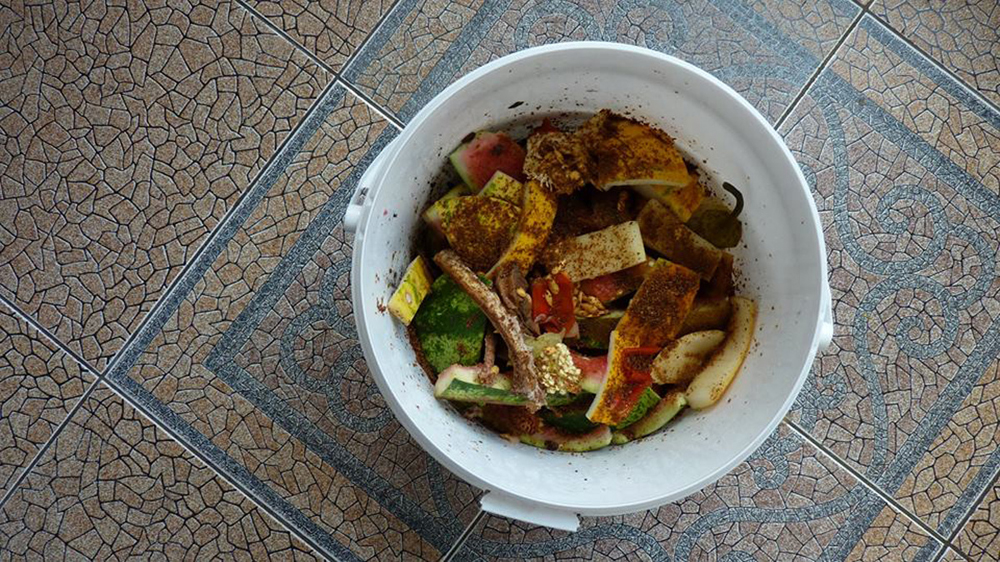
Assuming you don’t have a garden or do not want to deal with what happens next, you make an agreement with someone who has a garden and the interest to compost. At the moment, AskaWorm team has established agreements with several small farmers who sometimes come to the city and can pick your full buckets once in a few weeks.
So you collect your buckets somewhere, and when there are still a few empty left (just in case), you inform the AskaWorm that the buckets should be picked soon.
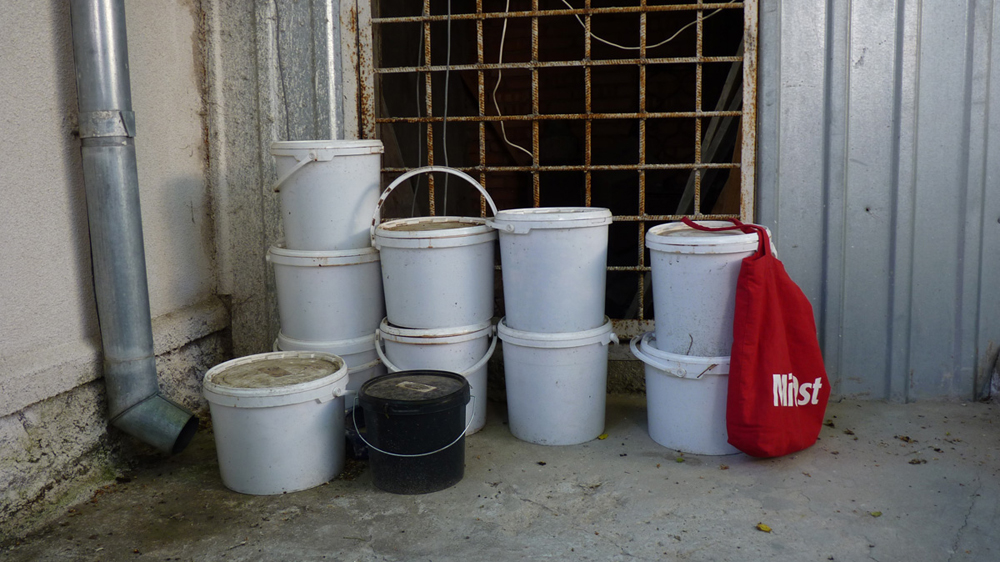
Then the farmer comes, gives you the empty clean buckets from the last time and takes the new full ones away.
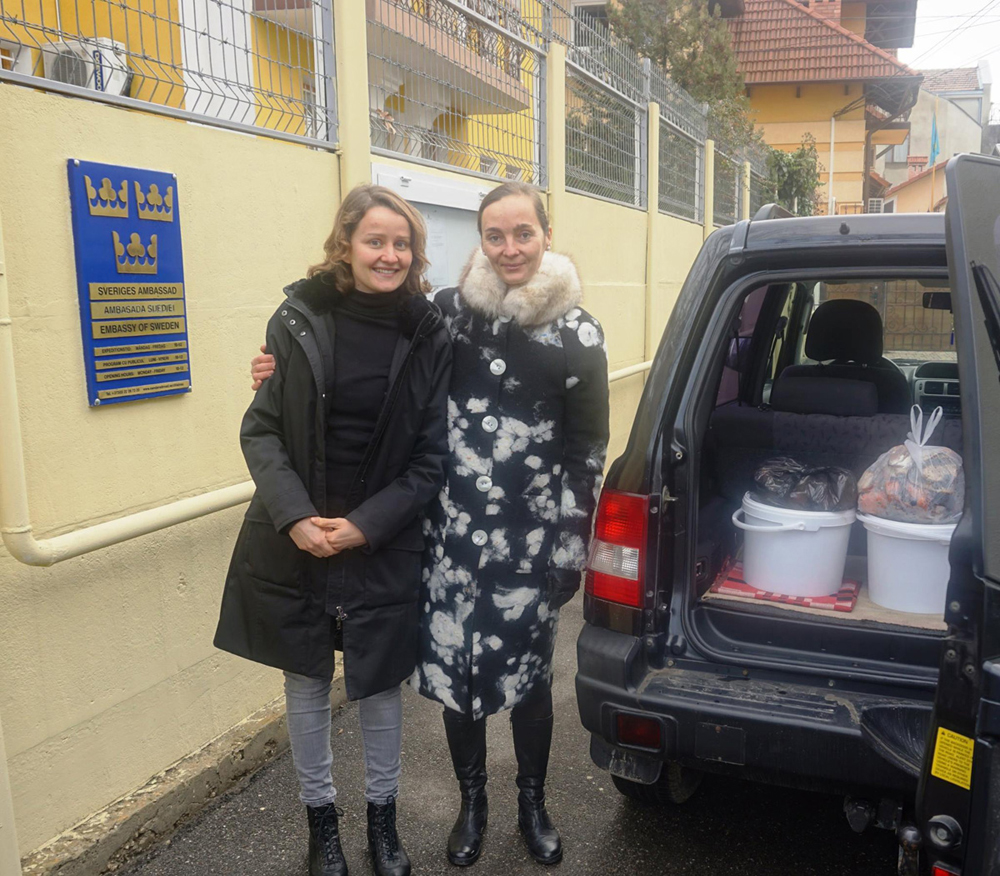
The buckets get to their destination – the place where their contents will be actually composted.

That’s what they look like when opened, nice and full.
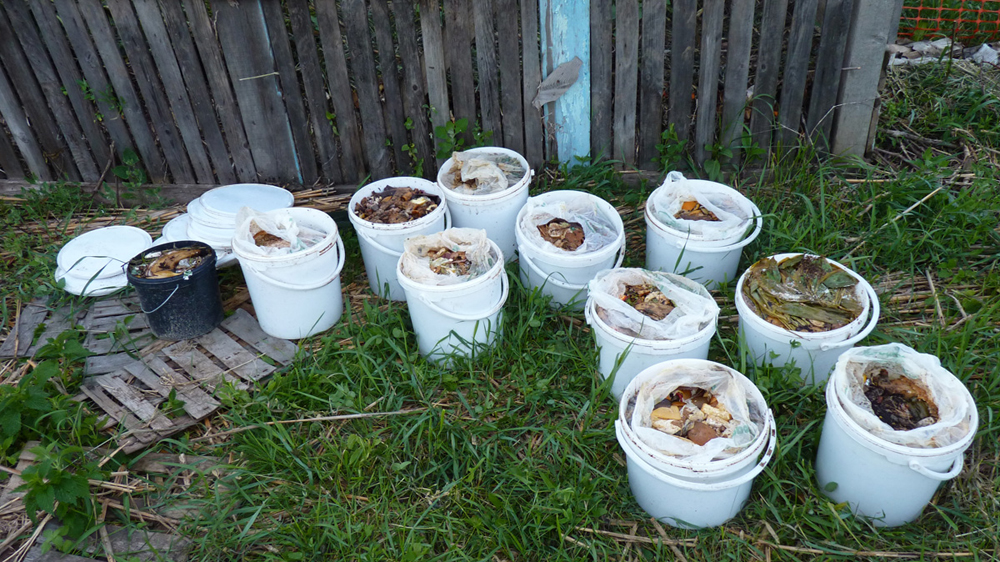
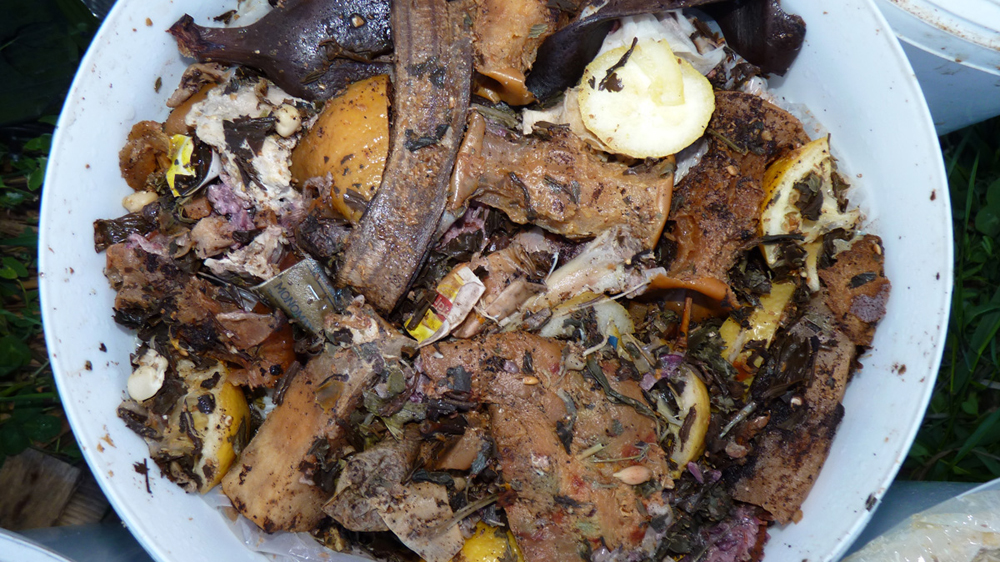
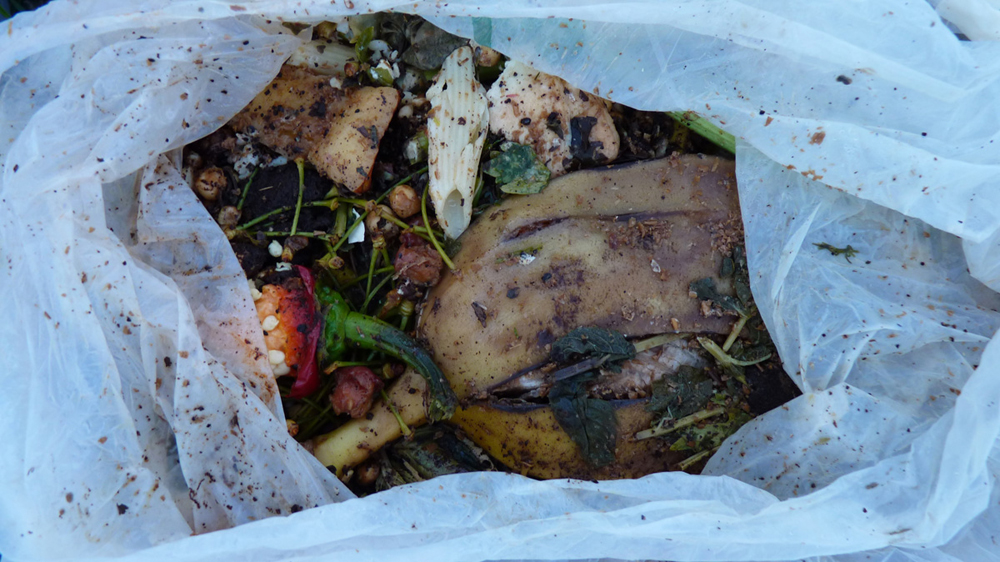
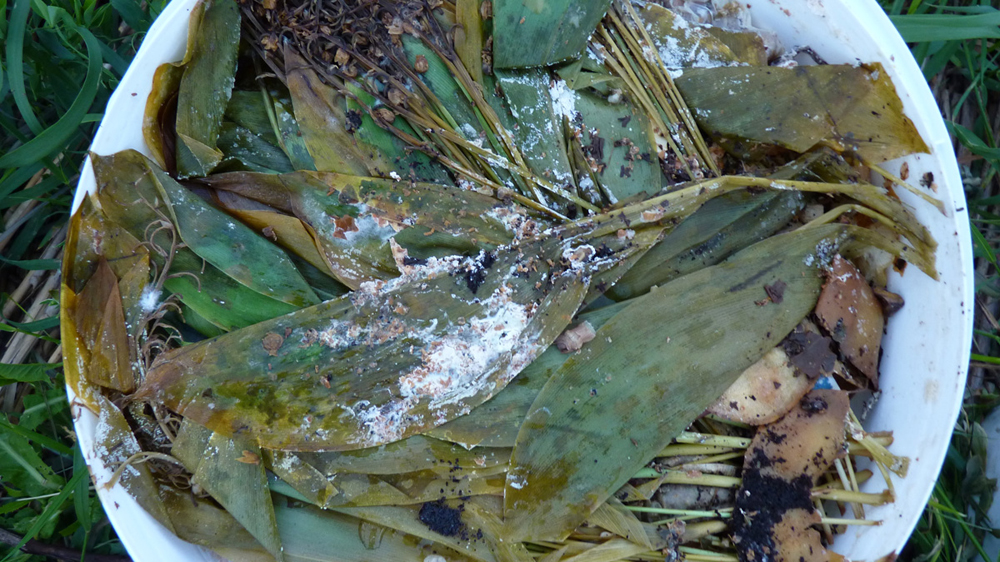
The buckets are emptied onto the composting pile…

…and washed, to be taken back to you for the next portion of food waste…

…and the pickled food waste is left in the composting pile (mixed with soil or other organic matter, to reduce the acidity) and, through hot composting or with the help of worms, will be in a while transformed in valuable compost, fertile soil.
If there are any biodegradable bags, then it goes to hot composting…
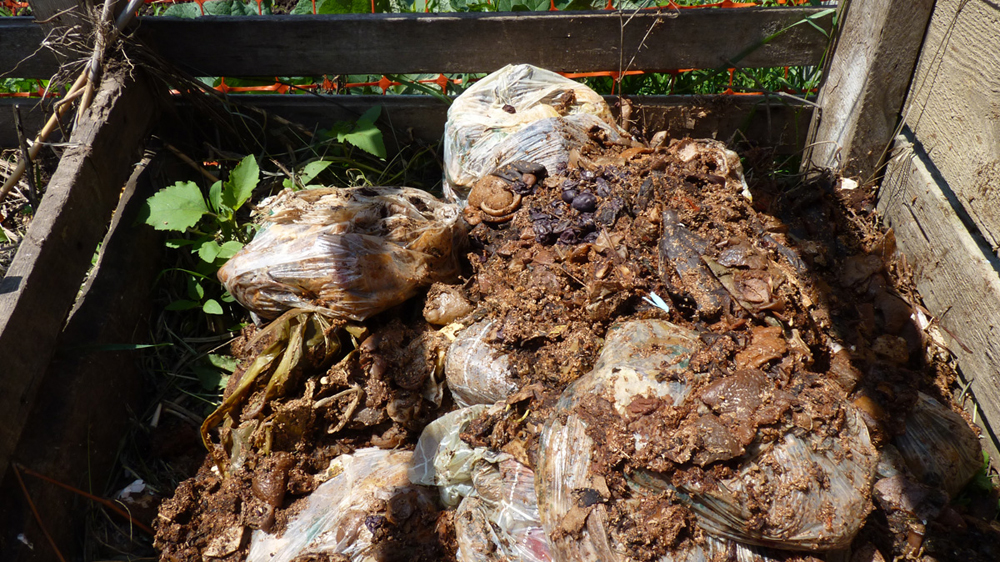
And if there is just food rests and paper, then your waste becomes worms’ treasure – they are most happy to deal with it.
